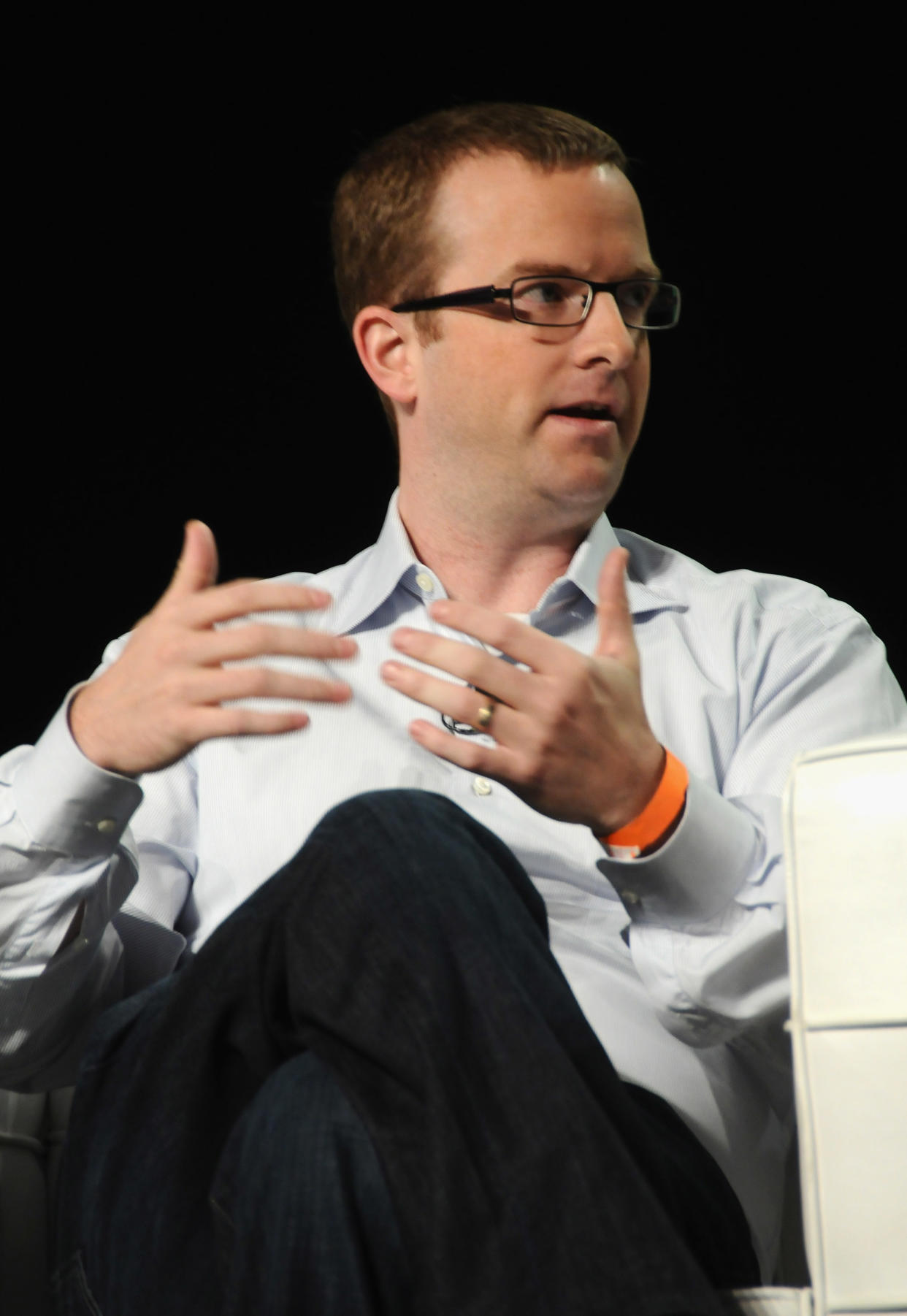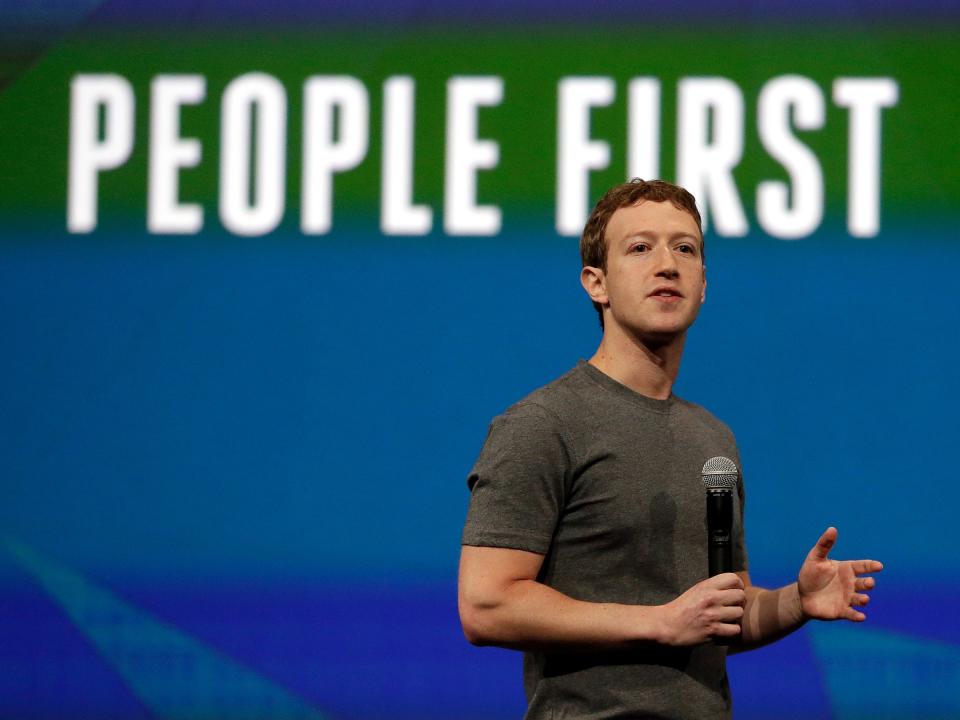Facebook chief tech exec explains how AI drives your experience on the site

For Facebook’s (FB) 1.7 billion monthly users, artificial intelligence isn’t the stuff of sci-fi flicks. It’s already heavily baked into the everyday Facebook experience — you just don’t realize it.
“In the early days, Facebook had no idea which photo was more interesting to you: a photo of what one friend ate for breakfast or another photo of a friend’s son taking their first step,” Facebook CTO Mike Schroepfer told Yahoo Finance at CES 2017 this week in Las Vegas. “Now, we have in product this technology that can analyze basic traits and help make sure you see the best stuff.”
Where A.I. remains really early and rough, though, is in having an actual back-and-forth conversation. Even with virtual assistants like Amazon’s (AMZN) Alexa — a breakout star at this year’s CES with a slew of compatible third-party devices — once you get beyond one or two exchanges, many systems fall apart, simply because things get too complicated and open-ended for them to follow and compute.
That’s why Facebook’s experimental virtual assistant, M, is still years away from being ready for the masses. As Facebook CTO, Shroepfer directly oversees the company’s A.I. effort, one of three pillars in the social network’s 10-year roadmap alongside virtual reality and augmented reality, as well as bringing internet connectivity to the 4.1 billion people in the world who lack it.
In theory, Facebook wants M to one day help Facebook users accomplish day-to-day tasks like booking travel, ordering food and scheduling appointments. Ultimately, it will be powered by a smart set of algorithms on the back end with very little human intervention. But for now, the virtual assistant heavily relies on a team of humans to complete many tasks.
It’s Facebook’s hope that in the not-so-distant future, A.I.-driven services like M will augment the human experience, and not replace it and displace workers, as some critics worry could happen. Indeed, the World Economic Forum estimates that as many as 5.1 million jobs may be displaced by 2020, due to the rise of A.I., machine learning, robotics and other nascent technologies.
“You need to take in the full picture of all these things that are happening,” Schroepfer contended, pointing out that 70,000 accidents are stopped every year in the US just from auto-breaking systems, which literally just have a camera under your rear-view mirror and hit the breaks so you don’t hit the car in front of you.
And while he did not deny AI will eliminate some jobs and change the kinds of jobs people do, Schroepfer added new kinds of jobs will be created, as well.
“We just have to help the whole world manage through that transition and make sure that there’s plenty of great work for everyone,” he said.

In the interim, A.I. is already transforming much of the way we engage with the world. Take, for instance, virtual assistants. Walk the crowded floors of CES 2017 in Las Vegas, and you’ll notice one of the largest trends is compatibility with Alexa, Amazon’s popular voice-activated virtual assistant. There were voice-activated self-driving cars, cellphones, even air purifiers.
Facebook (FB), however, isn’t in a rush to join those devices and services.
“Speech recognition is useful in environments where either your hands are already busy, so you can’t type, or it’s just more convenient to do it, like at home where I don’t want to have to pull out my phone and do things,” Schroepfer said.
People spend the majority of their time using Facebook when they’re, say, at Starbucks in line, walking between appointments, or are on the subway. Those are typically locations where you would text somebody instead of calling them, Schroepfer pointed out.
“That’s why I think we haven’t seen speech go so big into Facebook,” Schroepfer added. “It’s just the nascent use of Facebook — or the existing use of Facebook — is mostly in environments where people wouldn’t want to be talking into their phones.”
Elsewhere, the social network has made significant strides (and hit the occasional setback) with its ambitious plans to bring internet connectivity to the world. Mark Zuckerberg’s initiative, Internet.org, has already brought over 40 million people online. Last summer, Facebook’s first high-altitude, long-endurance aircraft Aquila — intended to beam internet down to areas in developing countries — performed a successful test run. But the crash of a Space X rocket in September also destroyed Facebook’s first $200 million satellite, aimed at bringing areas in Africa online.
“This is one of the reasons we pursue multiple efforts in parallel,” Schroepfer admitted. “I actually gave a talk to students in the fall about careers and technology, used this as an example. Look, it’s always easy to say, ‘I’m making big bets, we have big goals,’ when everything’s working. But if you’re making big bets and going after big goals, some stuff is going to blow up.”
The social network has big goals on the VR and augmented reality front, too. The release of hardware in 2016 from companies including Oculus, which Facebook acquired for $2 billion in 2014, has many analysts predicting 2017 will see a crop of new, immersive software experiences.
A December update to Facebook Messenger, meanwhile, introduced several new Snapchat-like augmented reality features, including the ability for users to try new photo filters, stickers and sport facial masks that are digitally superimposed on top of your photos.
“I think it’s going to play an increasing role, because people want creative ways to express themselves,” Schroepfer said. “The biggest problem I think people have is like, ‘Oh, what am I going to take a picture of or share now? It’s just not that interesting.’ This gives people an opportunity to create new, really interesting, fun things, share them with others and just express themselves.”
More of Yahoo Finance’s CES coverage:
T-Mobile’s One ‘All In’ plan is killing hidden fees and giving cash back
Samsung unveils gaming laptops and a partnership with Google
Carnival is turning its ships into floating connected hotels
—
JP Mangalindan is a senior correspondent for Yahoo Finance covering the intersection of tech and business. Follow him on Twitter or Facebook.


